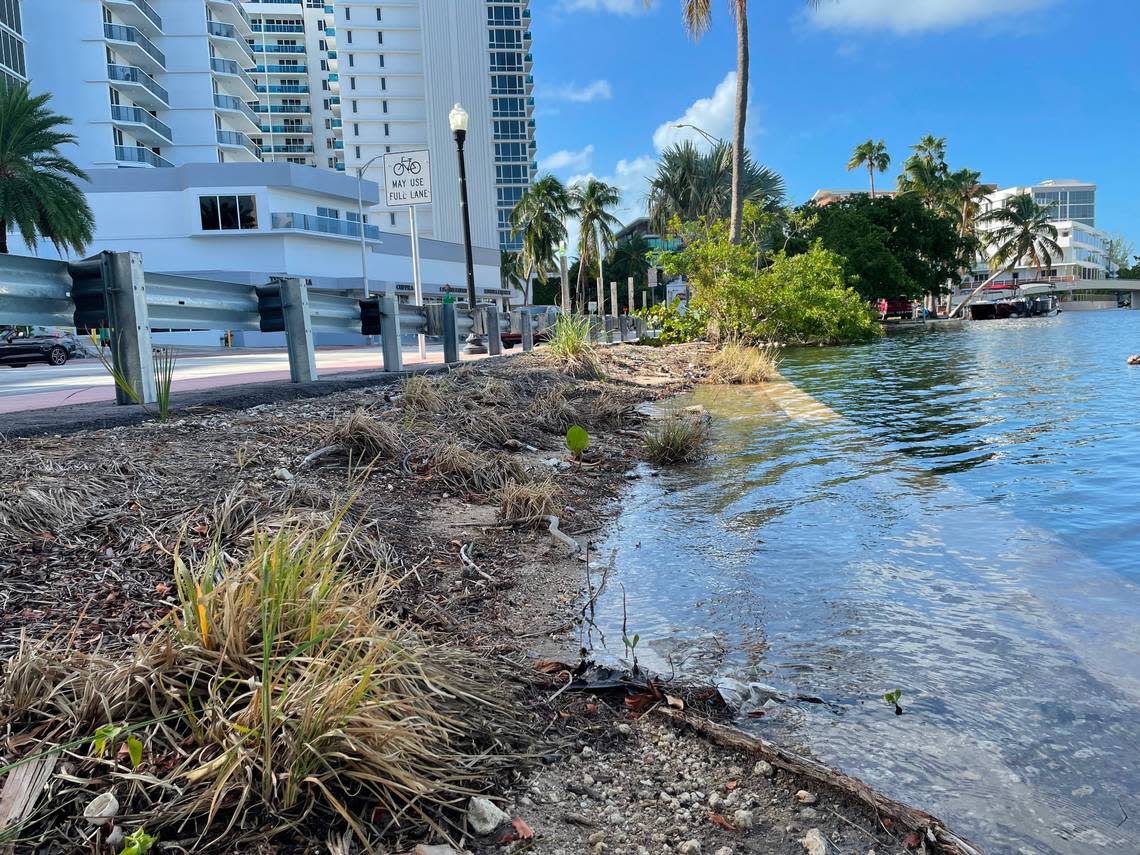King tides, previous erosion from Ian raise Florida’s storm surge risks from Nicole
When Tropical Storm Nicole hits the east coast of Florida sometime early Thursday, it won’t be packing the Cat 4 winds or pushing the devastating wall of water that Hurricane Ian did a month ago.
But two things make the coast more vulnerable than normal. First, Nicole’s arrival will coincide with the tail end of a king tide — potentially raising the threat of storm surge flooding, including in low-lying areas of South Florida. And after bulldozing Southwest Florida, Ian’s path across the state has already eroded the beaches and dunes that protect the east coast.
“We are at a critical point right now with the state of our beaches. ... Our buffer is gone,” Jessica Fentress, coastal division director for Volusia County, said during a press conference on Monday.
Read More: Hurricane warning issued for east coast of Florida as Tropical Storm Nicole strengthens
The peak of the king tide coincides with a full moon on Tuesday, which forecasters say will combine to create local high tides of about three feet above mean sea level for the rest of the week. During the morning high tide, for instance, water from Indian Creek in Miami Beach lapped over a curb next to Indian Creek Drive, about six inches below the level of the road.
With the National Hurricane Center predicting coastal Miami-Dade County may experience one to two feet of storm surge from Nicole, that may be enough to push salt water into the streets — even though the core of the storm will strike perhaps 200 miles to the north.

But the greatest risk for Nicole’s surge concerns a swath of the Florida coastline between Brevard and Duval counties, which suffered serious beach erosion during Hurricane Ian. With less sand to blunt the impact of pounding waves, houses and condos built along the coastline could face increased flooding
The coast of Saint Johns County, home to St. Augustine, lost more than half a million cubic yards of sand during Ian. The waves damaged the A1A and washed away dunes in Saint Johns, Flagler and Volusia counties that protected the historic highway, which is also a hurricane evacuation route. As an emergency measure, the Florida Department of Transportation trucked in sand and rocks to reinforce the road, but its coastal protection remains much weaker than it normally is.
Many coastal counties rely on sand dunes as their first line of defense against flooding.
“The dune system is designed to take the brunt of the ocean, especially with storm surge and high waves during a hurricane or tropical storm,” said Jonathan Lord, emergency management director for Flagler County. “Since much of the dune system has already been sacrificed, there’s a lot less protection to be given before the waves chew away at the properties behind the dunes.”
Just to the south in Volusia, officials said they expect the county to see nearly five-foot high tides in addition to five feet of storm surge and 8- to 10-foot waves when Nicole makes landfall. Fentress said there are at least two dozen shorefront buildings at risk of collapse.
During hurricanes, sand from dunes and beaches gets swept out to sea, where it piles up in nearshore sandbars. Over the course of months or years, the tides will gradually push that sand back onto shore and restore the beaches. In developed areas, humans typically speed up that process by pouring tons of fresh sand onto depleted beaches.
But in the six weeks between Ian and Nicole, there has been no time for nature or humans to heal the coastal wounds from Ian.
“Our repair process wasn’t scheduled to begin until January,” said Mike McGarry, who heads beach renourishment efforts for Brevard County. On Oct. 25, the county commission approved an $8.5 million plan to restore local beaches in the hope of finishing the work before the next hurricane struck.
Now, as Nicole bears down on Florida, county officials are powerless to shore up the beaches and protect the roads and homes behind them.
“There’s nothing we can do to protect that infrastructure at this point,” said Lord. “Now it’s about preparing the public, setting expectations and letting folks know that they must be prepared to potentially have to evacuate.”
This climate report is funded in part by a collaboration of private donors, Florida International University and the Knight Foundation. The Miami Herald retains editorial control of all content.
